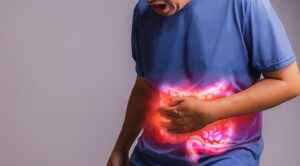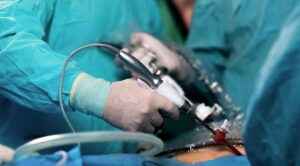One of the most common surgeries done nowadays is gallbladder removal, also referred to as cholecystectomy or gallbladder surgery. The majority of patients have it done to address gallstones, inflammation, or recurrent gallbladder episodes that are painful and uncomfortable for the digestive system.
You might be wondering what comes next if you’ve just had the operation or are getting ready for it. How much time will it take to recover? Which symptoms are typical and which are not?
Everything you need to know about life after gallbladder removal is included in this guide, including anticipated symptoms, crucial maintenance procedures, and practical recovery advice.
Why Gallbladder Surgery Is Performed
The liver produces bile, a digesting fluid, which is stored in the gallbladder. Digestion becomes uncomfortable and challenging when gallstones obstruct the ducts or the gallbladder becomes irritated.
The gallbladder is removed during gallbladder surgery, allowing bile to pass straight from the liver into the small intestine. Usually, it stops further attacks and permanently resolves symptoms.
What to Expect Right After Surgery
Nowadays, laparoscopic procedures are used for the majority of gallbladder surgeries, resulting in smaller incisions, less discomfort, and a speedier recovery. Your body still needs time to become used to it.
Common immediate post-surgery experiences include:
slight shoulder or stomach ache (due to surgery gasses)
- Weakness or exhaustion
- 1-2 days of nausea
- Gas or bloating
- Inability to digest fatty foods
Usually, these symptoms go away in a week.
Normal Symptoms After Gallbladder Surgery
Although each patient’s healing process is unique, the following symptoms are typically regarded as typical during the healing process:
1. Bowel Changes
- Loose stools
- An increased frequency of bowel motions
- yellowish stools as a result of altered bile flow
This is typical and usually goes away in a few weeks.
2. Gas and Bloating
After surgery, bile flows continuously, which momentarily alters digestion and causes gas or bloating.
3. Mild Pain or Discomfort
It is possible to anticipate moderate abdominal pain and soreness near the incision sites.
4. Tiredness
Fatigue is common for one to two weeks since your body needs energy to repair.
When to Seek Medical Help
Some symptoms need to be treated right away, even though the majority are normal:
- Severe abdominal pain
- High fever
- Persistent vomiting
- Pus or redness at the incision site
- Yellowing of the eyes (jaundice)
- Inability to pass stool or gas
Get in touch with your doctor immediately if you observe these symptoms.
Diet After Gallbladder Surgery
It takes time for your digestive system to adjust to living without the gallbladder. Recovery is greatly influenced by diet.
Best Foods to Eat
- Boiled or steamed vegetables
- Soups and broths
- Plain rice or khichdi
- Lean proteins (chicken, fish, tofu)
- Fruits like bananas, apples, papaya
- Oats and whole grains
Foods to Avoid
- Fried or greasy items
- Heavy dairy (cream, cheese)
- Spicy foods
- Fast food
- Caffeinated or carbonated drinks
Depending on how your stomach reacts, gradually add regular meals after starting with soft foods.
Essential Care Tips for Faster Recovery
Rest, dietary changes, and little exercise are all necessary for a full recovery following gallbladder surgery. The following advice can hasten healing:
1. Take It Slow
For at least three to four weeks, refrain from bending, hard lifting, and intense exercise. It takes time for your abdominal muscles to recover.
2. Walk Daily
Short, leisurely walks enhance digestion, avoid blood clots, and promote circulation.
3. Stay Hydrated
To aid in digestion and healing, stay hydrated throughout the day.
4. Care for Incision Sites
Maintain the area’s cleanliness, protection, and dryness. Don’t scrub or apply creams unless instructed to do so.
5. Follow Prescribed Medications
It could be advised to take digestive enzymes, antibiotics, or painkillers. Take these precisely as directed.
6. Avoid Large Meals
Eat modest, regular meals to avoid overwhelming the digestive system.
7. Watch Fat Intake
High-fat meals might produce pain or diarrhea because bile runs constantly without being preserved. Select low-oil, light dishes.
Returning to Work and Routine
Depending on their line of employment, most people return to work seven to ten days following laparoscopic surgery.
Three to four weeks of rest may be necessary for physically demanding jobs or manual labor.
Once you are pain-free and off of heavy painkillers, you can resume driving, traveling, or moderate activities.
Long-Term Life After Gallbladder Removal
For most people, living without a gallbladder is perfectly normal. Actually, the liver still produces bile; it just doesn’t store it. Your digestive system adapts and runs smoothly over time.
Long-term expectations:
- You can resume eating a typical diet.
- There may occasionally be moderate dyspepsia.
- The majority of people report feeling better than before due to the absence of gallstone pain.
Long-term digestive health can be maintained with a balanced diet and a healthy lifestyle.
Conclusion
Healing from the Gallbladder Surgery in Surat is typically easy and uncomplicated, especially if you know what to anticipate. It’s common to have mild pain, bloating, and digestive problems, but with proper care, these symptoms soon get better.
You can safely and confidently resume your routine by according to physician recommendations, eating the correct meals, and gradually increasing your level of activity.





